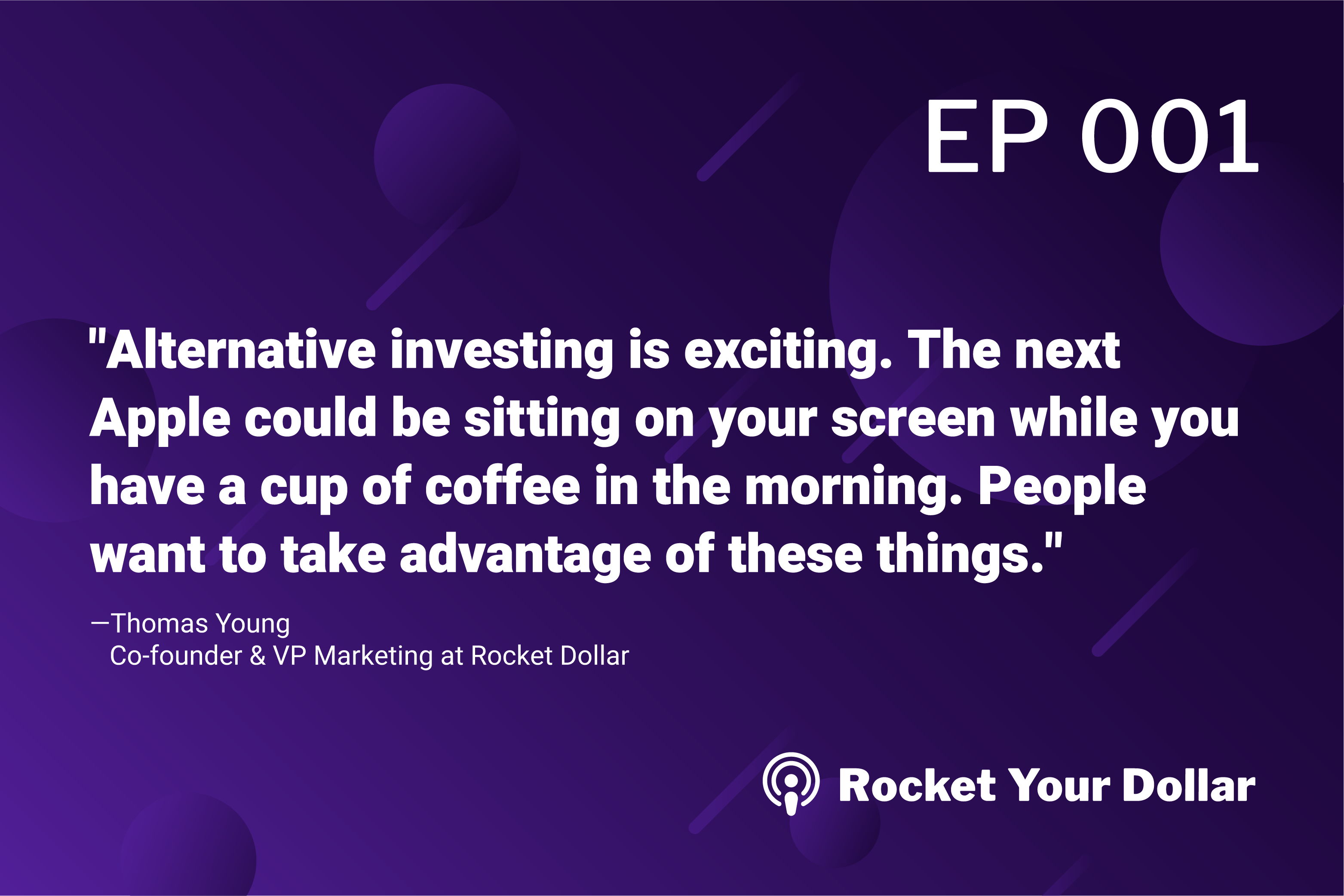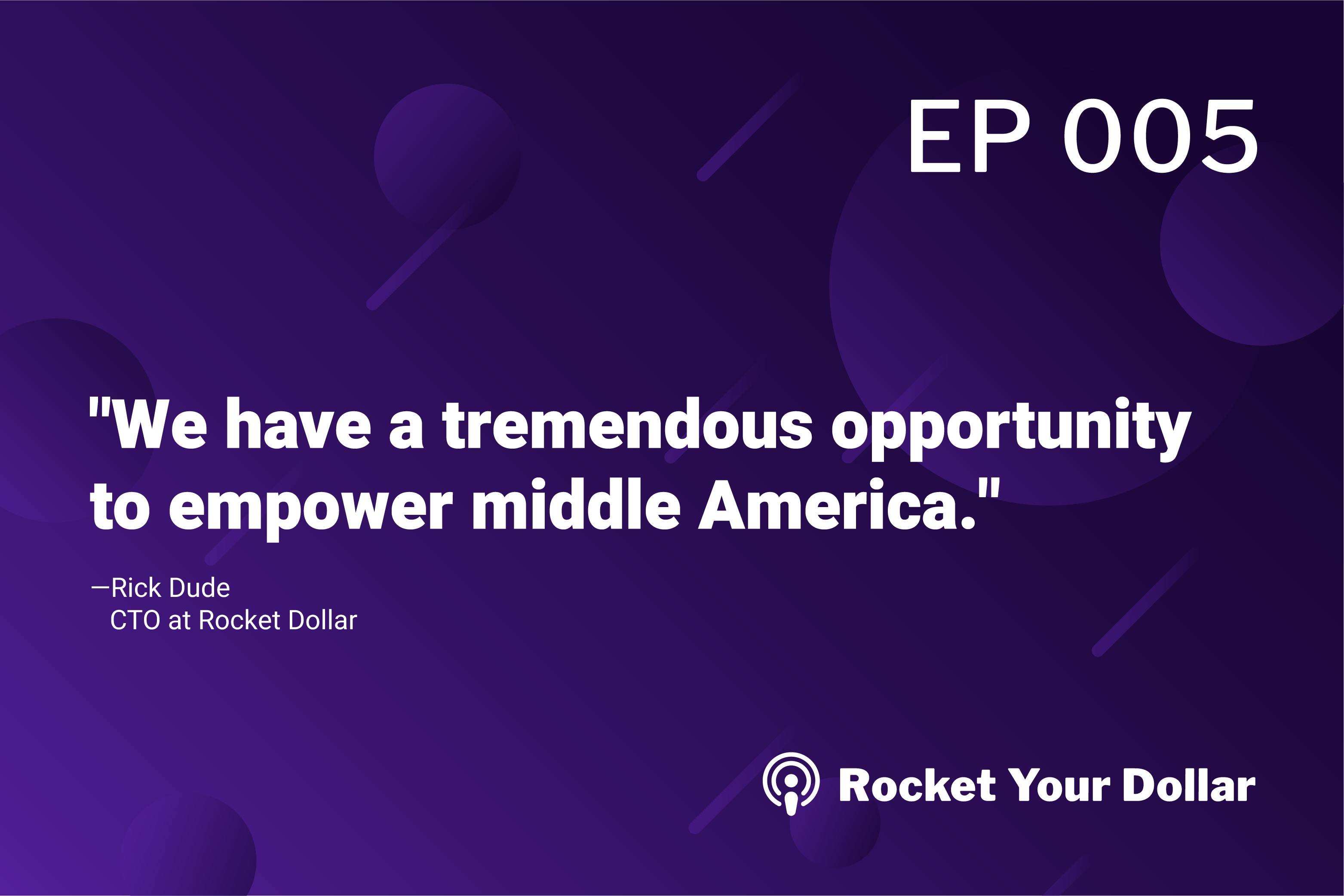How to Build Financial Freedom Through Real Estate with Dustin Heiner
In this episode of the Rocket Dollar Podcast, Henry talks with Dustin Heiner, founder of Master Passive Income, about how he went from a laid-off...
5 min read
 The Rocket Your Dollar Podcast
:
August 7, 2019
The Rocket Your Dollar Podcast
:
August 7, 2019
Thomas breaks down the tax advantages of a Self-Directed retirement account with real numbers. He also shares some research about the success of Yale endowment being invested in alternatives and why it could apply to any Self-Directed investor in today’s alternative asset market.
Example of Krista’s savings in Self-Directed IRA versus Ryan’s in regular brokerage account.
| 5 years | 10 years | 15 years | 20 years | |
| Ryan | $125,755 | $158,144 | $198,874 | $250,094 |
| Krista | $140,255 | $197,715 | $275,903 | $386,968 |

Thomas Young:
Today we’re going to talk about taxes and the detrimental effect that they have on returns. We’re going to talk about the power of tax deferral in a self-directed account. We’re going to talk about what taxes do to your returns. We’re going to talk about how a self-directed account allows you to make the investments that you want without having to pay taxes. Which means that you don’t have to use cash for these sort of investments anymore and pay ridiculous taxes.
So when we’re talking about 20%, it depends on what we’re talking about, right? If it’s 20% tip on lunch, hardly seems worth discussing, right? Service is good, 20%, no big deal. But when we’re talking about your retirement accounts, 20% could mean hundreds of thousands, even millions, of dollars more versus having used cash and lost 20% of that because you have to pay the taxman.
We’re going to take two of my team members at Rocket Dollar, both on our engineering team, Ryan and Krista.
So let’s suppose that they each have $100,000, they have 20 years, and they’re both going to earn 7% consistently year over year. The difference between Ryan and Krista is that Krista is going to make her investment inside of a Rocket Dollar account, and Ryan is going to use cash. So after the 20 years, after the 7% return, what’s the difference? The difference is that Krista will actually have 136,874 more dollars than Ryan who had to pay taxes on his investments.
Now, even if Krista were to withdraw that money, she’s going to have to pay the taxes somewhere down the road if she made the investment in a Traditional IRA or a traditional Solo 401(k). But it would still be only $90,000 in income taxes, netting almost 50,000 more dollars than Ryan having made the exact same investment at the exact same time horizon with the same return.
Now, here’s the really cool part. If Krista had used a Roth account, she wouldn’t have to pay that $90,000 in taxes. She would have already paid income taxes on that $100,000 sitting in a Roth account, and all the gains and all the withdrawals would be tax-free forever.
We’ve illustrated in real dollars how tax deferred accounts can greatly impact your taxable situation, we can explore a real option for those looking to invest while also maintaining a tax-deferred vehicle for those same dollars.
The increasingly common path for many is self-directed investment accounts. So let’s talk about the power of self-directed alternative investments. So Krista is a savvy investor. She’s got a Rocket Dollar account set up, and she knows what she wants to invest in. She knows that she needs to diversify her investments, right, to help manage risk, but the traditional 80 to 20 equity to debt allocation model, Krista let’s assume is in her 30s so she still has mostly public stocks, being told to take a little bit higher risk because she’s got a longtime horizon to watch that risk play out.
But that 80-20’s not going to cut it anymore. Recent market changes including the rise of ETFs and the increasing use of high frequency trading have created an environment where the traditional approach to diversification isn’t going to protect an IRA from a recession, no matter how long you have to wait until retirement. Krista needs additional tools to help manage her risk more than ever before. That’s where a Self-Directed IRA comes in handy.
For a little bit of proof on the power of alternatives, we’re going to switch over a little bit and talk about the Yale endowment, and the returns that the Yale endowment has had and their allocation strategy of stocks, bonds, and alternative assets.
Since 1975, the IRS has allowed investors to use their IRA funds to invest in alternative assets such as real estate, private equity, precious metals, and a host of other investments. These all bundled up are called alternative investments. Basically, anything out of the stock market and bonds. These alternative assets are foreign to many investors, but ivy league schools like Yale have been diversifying their endowments into leverage buyout, private debt and equity, natural resources, real estate, and in doing so have earned an 11.3 investment return in just 2017 alone.
Yale’s portfolio asset allocation model has been adopted by many other institutional investors around the world that have access to alternative investments. Alternative assets are a very attractive investment option for many private fund managers such as those managing the endowments of some of the world’s biggest and most famous institutions.
Now, many of these investments are with private companies, and their performance is less to do with global and market conditions and more to do with the underlying performance of the companies themselves. Consequently, the returns are not correlated to the public markets and quite often can provide a counterbalance to market conditions. Just because the market goes down doesn’t mean an individual company, especially a private one, won’t hit their high growth phase right as the market’s coming down.
One way to consider an alternative investment is this: you can invest in things you can see, know, and trust as opposed to trusting a Fortune 500 CEO that you’ve never met or a fund whose investments you have no control over. Krista, like many investors, happens to be someone who feels more comfortable investing in a product she knows and a team who she genuinely thinks can succeed.
In the case of Krista, she can invest in something she knows intimately such as a new Fintech startup, she can meet the CEO, the development team, and even serve as an advisor if the startup is looking for some help. Krista, like many investors, happens to know someone who feels more comfortable investing in a product she knows and a team who she genuinely thinks can succeed.
The same can be true with real estate. You know the area where you live, and you know what rents are like, and you can make an investment in an asset that no matter how badly the market does, people still need a place to live, and rent’s, depending on where you live, could hold steady through a recession or at the very least provide a little bit of cashflow during a downturn.
Why is a Yale model so attractive? It’s attractive because it offers an opportunity to hedge risk while still maintaining high returns. And how do they get that? It’s because of the diversity of assets that they hold inside of their endowment. It can be anything from real estate to natural resources, private debt and equity, leveraged buyouts, but what’s the problem? In most retirement accounts, you aren’t able to have the sort of flexibility around your investments as a Yale endowment, and that’s the beauty of a self-directed retirement account. With a self-directed retirement account, you’re free to model your portfolio around the most successful ones out there.
Now that we’ve hit a little bit about how self-directed account can save you a bundle on taxes, let’s talk a little bit about reporting and how most self-directed providers, you’re kind of on your own to do this with your CPA, and one of the things that we at Rocket Dollar really take seriously is just the ease of reporting.
Depends on if you have a Solo 401(k) or a Self-Directed IRA with us, but regardless having your investments all in one place inside of the Rocket Dollar dashboard means that our team can easily prepare all of the relevant documentation that needs to be filed on a yearly basis whether it’s a fair market valuation for an IRA or a Form 5500 for a Solo 401(k). Our team can easily and quickly spit these out for you and make sure that all of your documents are filed on time and in the right manner. It’s just part of the tech that we build to make managing these accounts easy so you can focus on what matters. That is, choosing investments, making the decisions that are best for you, and letting us handle all the compliance on the backend.
On a final note, generally speaking investors can now choose to invest locally which is an increasingly common approach. People want to invest in what they know and love. And in a company whose products make sense to them. Investors, it seems, are insulating their overall portfolios from public market volatility and using the strategy to invest in a way that makes them comfortable with where their money is and where it’s working for them.
.png)
In this episode of the Rocket Dollar Podcast, Henry talks with Dustin Heiner, founder of Master Passive Income, about how he went from a laid-off...

In this episode of Rocket Your Dollar, Henry interviews Chris Kline of BitcoinIRA about how the retirement landscape is shifting beyond traditional...

In this interview, Rocket Dollar CEO Henry Yoshida joins "The Shannon Joy Show" to explore the broader market landscape and what investors are...

If Self-Directed investing can really lead to financial independence then why haven’t you heard of it? Investing with a Self-Directed IRA is a...

Rick Dude, Co-founder and CTO at Rocket Dollar, shares his initial experience trying to open a Self-Directed account the hard way and how it drove...
.png)
Surprise! Rocket Dollar has launched a crowdfunding campaign on Republic.co, join us as we give you an inside look into our startup's growth. Our...